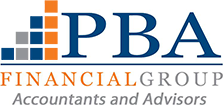2 in 3 SMEs benefit from instant asset write-off, survey reveals
The uncapped version of the instant asset write-off scheme was extremely popular among SMEs with the average spend over $90,000, according to ScotPac.

.
The latest SME Growth Index by ScotPac has shown that 63 per cent of Australian SMEs took advantage of the Uncapped Instant Asset Write Off Scheme in the financial year before the revised $20,000 per asset limit.
Since its introduction more than a decade ago, the Instant Asset Write-Off (IAWO) Scheme has allowed eligible businesses to claim an immediate tax deduction for the purchase of various assets, up to a specified threshold.
At the outset of COVID-19, the federal government increased the IAWO threshold from $30,000 to $150,000 to make it easier for small businesses to benefit from asset purchases. It later removed the cap entirely by introducing temporary full expensing.
It later removed the cap entirely by introducing temporary full expensing.
A revised IAWO threshold of $20,000 per eligible asset was introduced for 12 months from 1 July 2023.
The survey by ScotPac reveals that SMEs ramped up their use of the scheme in the lead-up to the capped version of the scheme.
The average amount spent by SMEs that used the IAWO scheme in the 2022–23 financial year was $91,500.
SMEs with declining or flat growth were the biggest users of the scheme with 68 per cent purchasing eligible assets, compared with 59 per cent of growth SMEs.
NSW and the ACT recorded the most use with 75 per cent of businesses in these states taking advantage of the scheme.
ScotPac CEO, Jon Sutton, said the IAWO scheme has been a major factor in SME decision making on capital expenditure in recent years.
“There is no doubt the Instant Asset Write-off Scheme has achieved its objective of encouraging SMEs to invest in assets to help grow their business,” Mr Sutton said.
“In raw numbers, hundreds of thousands of SMEs were able to claim tax relief worth billions of dollars for assets purchased in 2023-24.
“When you consider the rising costs faced by all businesses in that period, including the cost of critical assets, the Instant Asset Write-off scheme has provided a great boost for SMEs,” Mr Sutton said.
Under the current IAWO threshold, a $20,000 cap applies on an asset-by-asset basis.
Assets valued at more than $20,000 are placed into the small business depreciation pool and depreciated over several years.
Mr Sutton said while there was understandable disappointment that the temporary full expensing measure had ceased, the current IAWO scheme still provided incentives for SMEs to invest in capital.
“Average capital expenditure levels for SMEs are continuing to grow,” he said.
“While recent changes to the scheme have removed the immediate tax benefit for larger items, the $20,000 per asset cap still provides opportunities for SMEs looking to expand or upgrade their asset base.”
Miranda Brownlee
31 January 2024
accountantsdaily.com.au/
